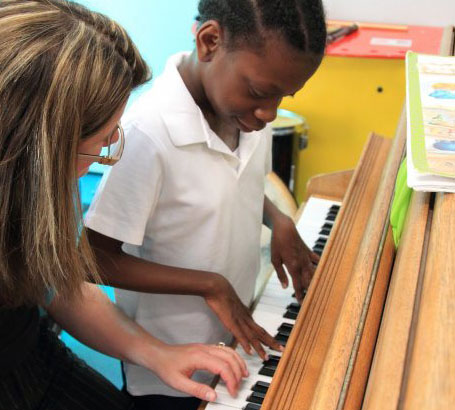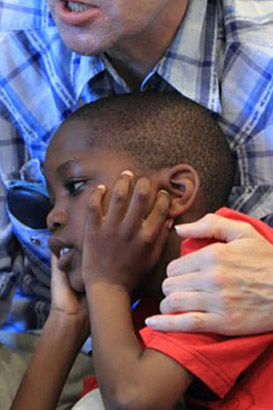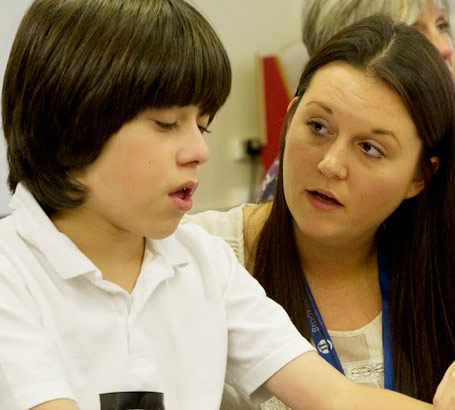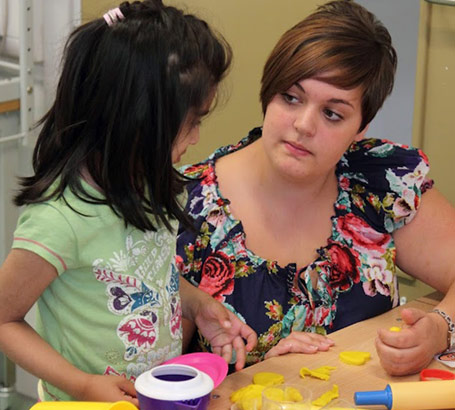
Here we focus on exploring a simple profile of emotional and behavioural development and the ways in which it may be used to measure the impact of strategies aimed at managing pupils’ behaviour better. The emphasis is upon the behaviour of pupils in a mainstream setting..
Researchers from the University of Birmingham School of Education developed a criterion-referenced measure of emotional and behavioural development. The criteria were developed in consultation with staff in both mainstream and special education settings. The guidance uses scales that rely on observation of individual pupils' behaviour rather than full-scale psychological or psychiatric assessments.
The criteria address three distinct aspects of behaviour: learning behaviour, conduct behaviour and emotional behaviour.
There are five criteria related to each aspect. The criteria consist of both desirable and undesirable behaviours.
Read the criteria which are given on pages 12 to 16 of the following booklet.

The criteria were not intended to replace existing behaviour criteria scales that are used by some schools; these may
contain more detail and be better suited to individual formative assessment with pupils.
The booklet includes a two-page record sheet (pages 10 and 11) which provides an overview of the criteria. Each criterion,
which is a positive set of behaviours, is linked to a six-point rating scale. The desirable behaviour is marked as occurring
not at all, rarely, sometimes, fairly often, often, or always.

The scales provide information that is useful for devising strategies targeted at improving behaviour throughout the school or in relation to specific groups of pupils. By establishing a baseline and repeatedly revisiting the scales it should be possible to monitor the impact of:
- New school strategies aimed at introducing wholesale changes in teaching and learning practice;
- New ways of working with, and supporting, specific groups of pupils.
The scale could be used by schools as a basis for developing a positive behaviour checklist using the same rating scale. For instance the full criteria for item 4 could be developed into a checklist similar to the following.
The frequency of occurrence: |
Not at all | Rarely | Sometimes | Fairly often | Often | Always |
| Works well in a group situation | ||||||
| Works collaboratively with others | ||||||
| Is an effective communicator in group discussions | ||||||
| Listens to what others have to say in group discussions | ||||||
| Adds positively to group discussions | ||||||
| Is willing to take on responsibilities in a group context | ||||||

Would the behaviour checklist suggested on the previous page be appropriate in your context? Would it be useful?
To what extent would you need to reformulate it to make it fit for purpose?
Can any one behaviour checklist ever be entirely appropriate for all students with complex needs?

Again, where is the information about the contexts in which the behaviour occurs? Some additional comments are needed about the situations in which these behaviours are more likely to be observed. Also, the pupils’ behaviour can change if they know that they are being observed. Therefore, discreet use of the scales is important when building up a valid picture of their behaviour. The scales can also be used as a focus for discussion between staff who know the targeted pupils well and this will be somewhat less time consuming than conducting systematic observations.
The scales may also be used in a way which includes the targeted pupils. For instance, they may be involved in discussing where they feel they are on a specific scale and what they could do in order to achieve a higher rating.

Observe the behaviour of targeted pupils using the emotional and behavioural development scales as a guide to gathering
evidence in school.
Additionally or alternatively, you may use the scales as a focus for discussion with other members of staff who know
the targeted pupils well. Reflect upon the usefulness or otherwise of these scales in terms of accurately identifying and
assessing needs and in informing subsequent interventions.

It should be emphasised that the instrument was not intended to be used as a diagnostic tool, but to indicate potential
targets for improvement using cyclical target-setting and school improvement strategies.
It may be a useful tool for providing a basis for a strategic discourse between staff for planning approaches to the emotional
and behavioural development of pupils in school.